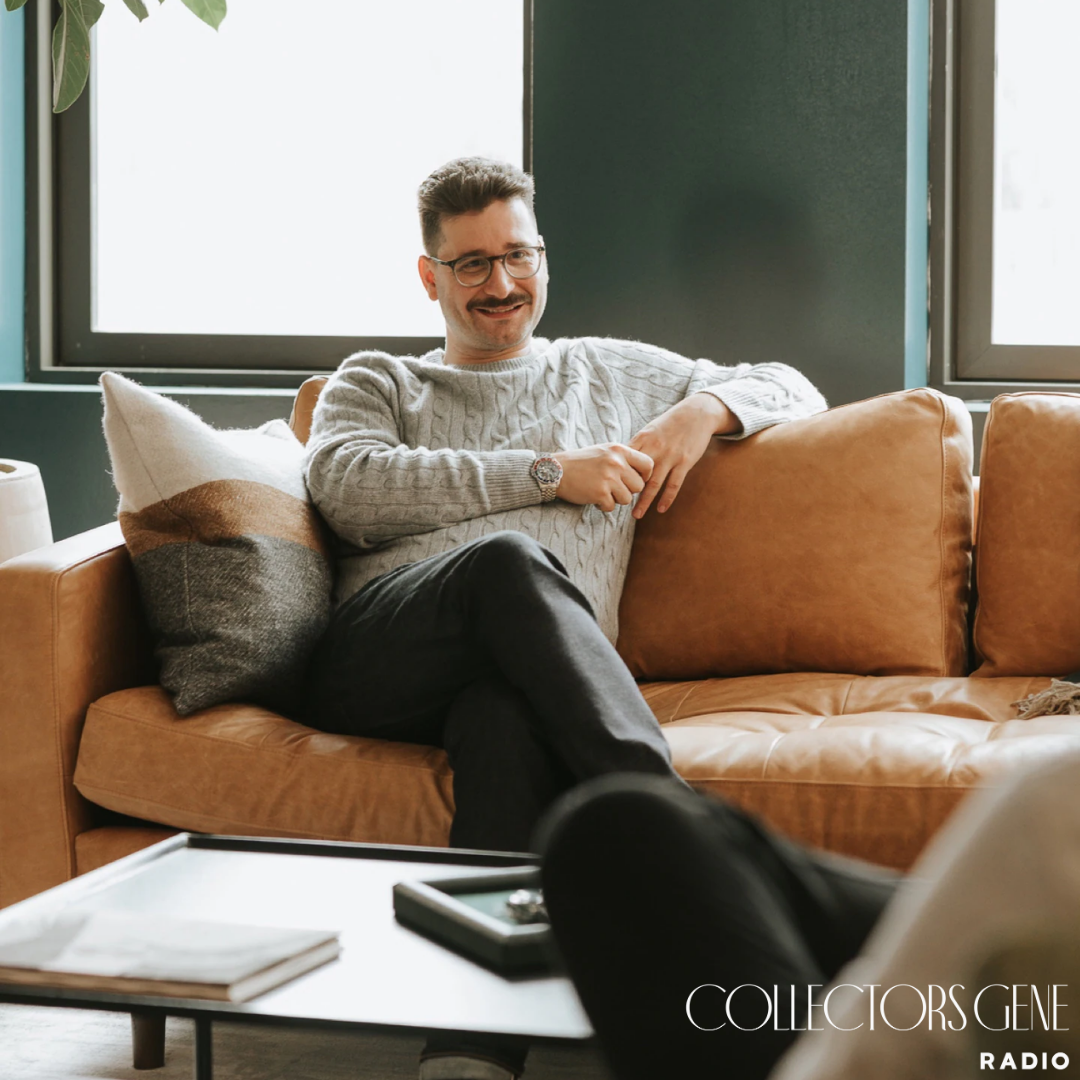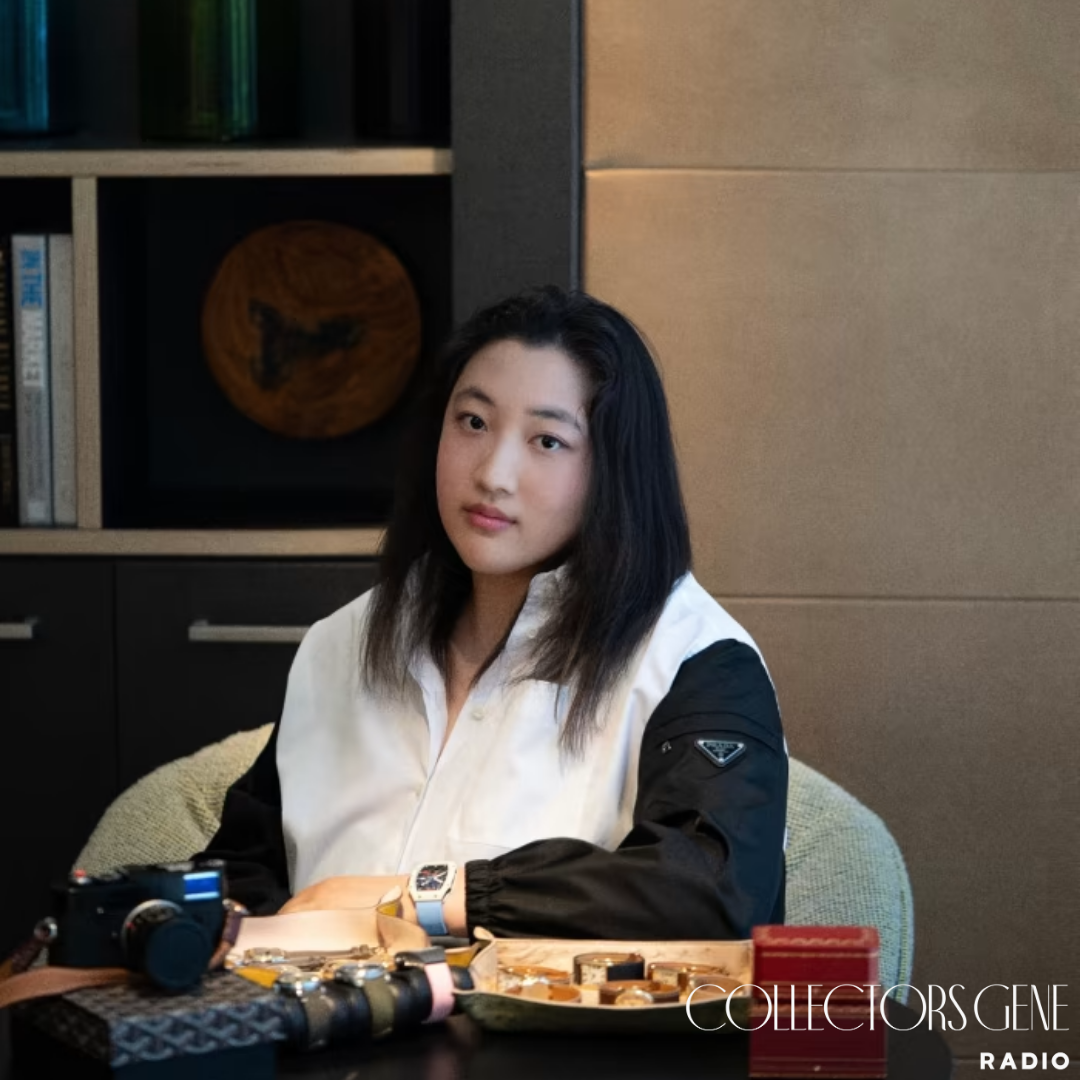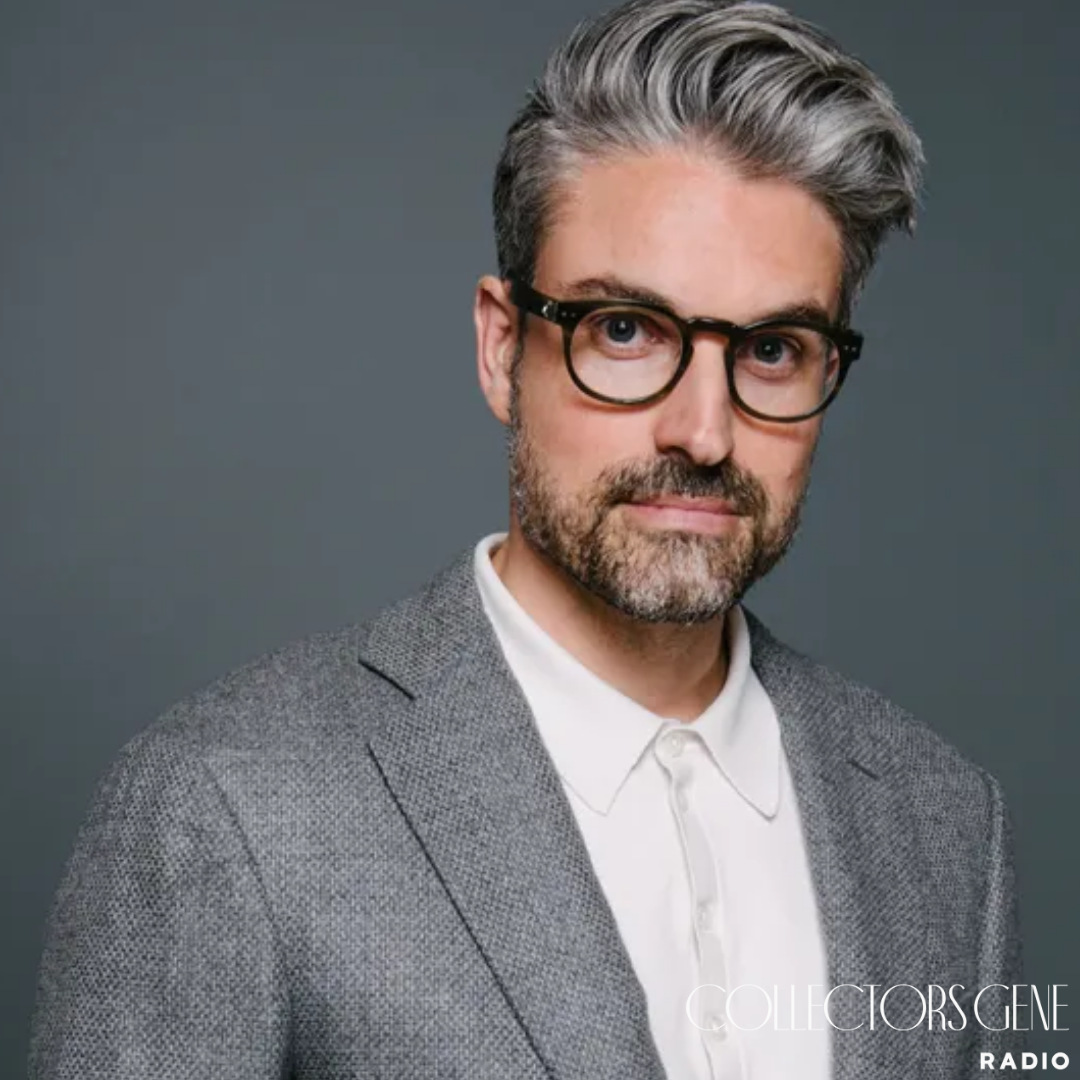There’s a particular kind of quiet that settles over a room filled with objects carrying history. Not museum quiet, not sterile. It’s the quiet of presence. A watch that ticks with someone else’s decades on its dial. A chair that has softened under generations of use. A glass that feels different in the hand because it has poured countless drinks before. That’s the space Matt Hranek inhabits, and it’s the space I found myself in when we spoke.
If you’ve followed his work, you know Matt isn’t just a collector. If you’ve followed his work, you know Matt isn’t just a collector. He’s an editor, photographer, storyteller, and the mind behind books like, A Man & His Watch and A Man & His Car, titles that live on as much for their design as for their words. But what makes Matt stand out to me is that he approaches collecting less as acquisition and more as a way of calibrating taste. He’s not filling a vault; he’s shaping a life.
An Eye Formed Early
Matt’s foundation for all of this comes from his family. His father, a commercial artist and pinstriper, had a wardrobe of Harris tweed jackets and a garage filled with British cars that were both beautiful and slightly impractical. His mother’s side carried the discipline of shoemaking, a craft measured not in fashion cycles but in longevity.
That early exposure to objects made with purpose left its mark. To Matt, quality was never just durability. It was texture, proportion, balance. A blazer wasn’t just something you wore; it was a lesson in form. A Jaguar wasn’t just a car; it was a sculpture in steel. Those lessons became the framework through which he sees everything now, from a Pendleton shirt to a Fornasetti plate.
Coffee-Table Books as Objects
Most people think of books as vessels for information. Matt thinks of them as objects. When he sets out to make one, his first thought isn’t what it will say but how it will feel. Will it sit heavy in the hand? Will it earn its spot on a table? Will the type, the photography, the weight of the paper, carry authority?
That’s not superficial, though he’ll joke about it. It’s discipline. Just like he won’t buy a flimsy glass, he won’t make a flimsy book. Whether he’s writing about watches, cocktails, or cars, the book itself has to live up to the subject matter. It has to be something you want to keep, not something you flip through once and shelve.
It’s this sensibility, that objects should carry their own presence, that connects everything Matt does. A book, like a watch, is a tool and a totem at the same time.
Flea Markets, eBay, and the Mushroom Hunter’s Eye
Ask Matt about finding objects and he’ll tell you it’s not about luck, it’s about training. He likens it to mushroom hunting: the first time, the forest looks empty; the second, you see them everywhere.
He moves through flea markets and antique stores like someone scanning for patterns in static. “I can get through a 25,000-square-foot flea market in six minutes,” he told me, not bragging, just stating a skill honed over decades. The eye is quick because the mind already knows what it’s looking for.
Whether it’s spotting the right cut of a wool flannel, an overlooked Baccarat glass, or an Italian modernist object that most shoppers breeze past, Matt isn’t searching for “stuff.” He’s scanning for resonance, for that subtle quality that separates the ordinary from the quietly extraordinary.
Rituals That Define Taste
When you strip collecting down to its essence, what remains are rituals. Matt knows this. His father’s weekend outfits weren’t just clothing; they were a signal of respect for the day. His grandfather’s shoemaking wasn’t just craft; it was carefully translated into leather and thread.
That sense of ritual shows up everywhere in Matt’s life. It’s in how he mixes a Negroni. It’s in how he chooses the watch he wears in the morning. It’s in how he designs his spaces. Objects matter, yes, but the way they’re used is what gives them their soul.
That’s why he gravitates toward things like Fornasetti pieces. A whimsical tray or vase isn’t just decoration. It’s a playful moment that interrupts the ordinary. It’s an object that creates conversation, that injects humor into a room. Collecting those pieces isn’t about value; it’s about mood.
The Collectors Gene Rundown
The One That Got Away: A rose gold mid-1960s Rolex, found at a New York flea market for $5,000 before the internet changed everything. At the time, he and his partner, now his wife Yolanda, were building a house Upstate. The decision was between flushing toilets or the Rolex. Toilets won. He’s been looking for that watch ever since.
The On Deck Circle: Fornasetti remains at the top of his list. Italian modernism in general still calls to him. The blend of humor, precision, and scarcity makes these objects endlessly fascinating.
The Unobtainable: Early Alex Katz paintings. They come up now and then, taunting him online, but slip away each time. The desire isn’t about speculation. It’s about the work’s balance of restraint and power.
The Page One Re-Write: Cars. More of them, in more variations. He imagines something closer to Jay Leno’s garage, eclectic and obsessive, filled with vehicles that are as much about story as they are about horsepower.
The GOAT: Doug Bihlmaier, the man behind Ralph Lauren’s archive of Western and vintage objects. His foresight and taste have been a touchstone for Matt, proof of what a lifetime of careful, passionate collecting can look like.
The Hunt or The Ownership: For Matt, it’s the hunt every time. The scan, the chase, the flash of recognition. Ownership is a byproduct. The chase is the thing.
Do You Feel That You Were Born With The Collector’s Gene?: Absolutely. From digging through dumpsters in Brooklyn to combing flea markets, Matt believes the instinct is inherited as much as learned.
Why This Conversation Matters
What stayed with me after talking with Matt wasn’t just the inventory of his collections. It was the clarity of his eye. He’s not interested in what’s hot on Instagram or what’s selling for seven figures at Phillips. He’s interested in what carries presence.
That’s a theme I’ve seen across guests, and it builds from one conversation to the next. With Matt, it’s Fornasetti. With someone else, it might be hood ornaments or champion sweatshirts or Hermès silver. The through-line is the same: an object with history, personality, and intention will always outlast the hype.
Closing Thoughts
Spending time with Matt Hranek reaffirmed for me that collecting is less about ownership and more about calibration. Every watch, every chair, every jacket adds a degree to the lens through which he sees the world.
For those of us who share this impulse, it’s a reminder to slow down, to look closer, to refine. The next time you’re in a flea market or scrolling late-night auctions, don’t just think about price or rarity. Think about presence. Think about the story an object tells and how it fits into your own.
That, more than anything, is the collectors gene at work.





